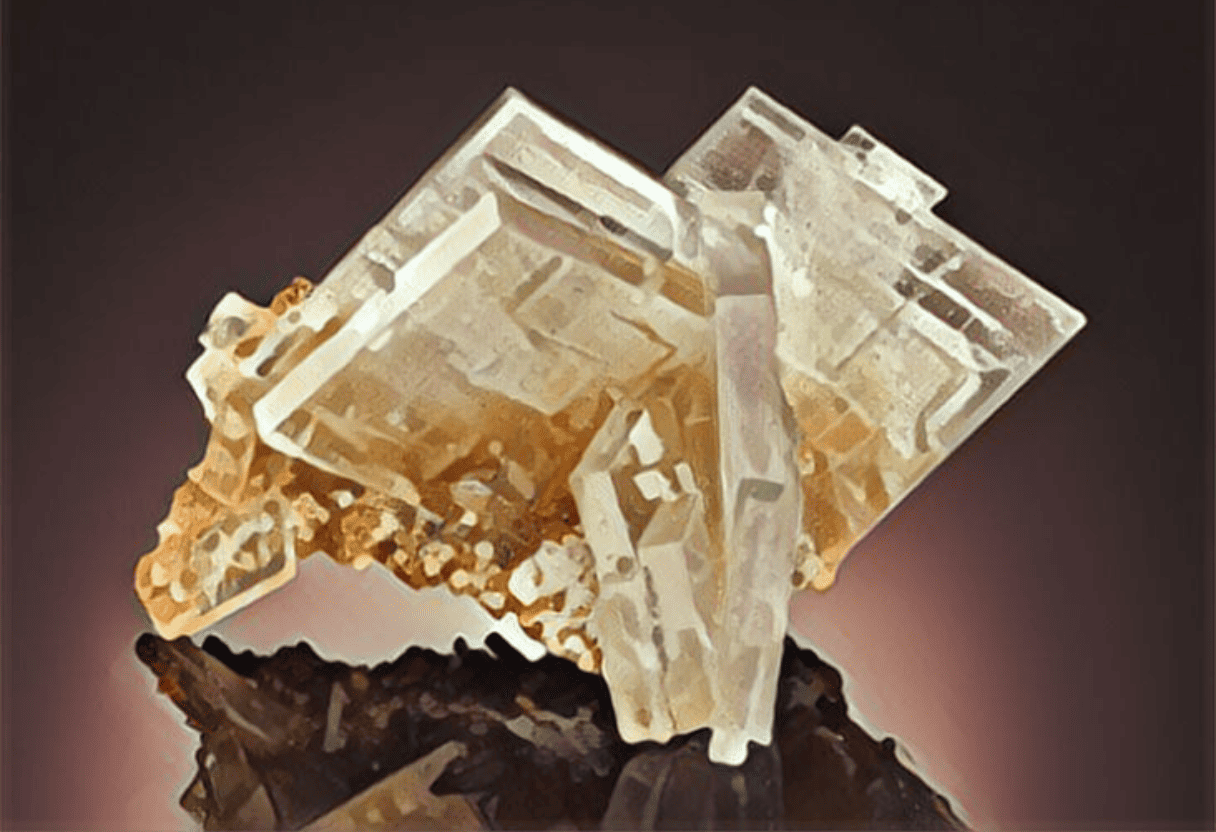When I’m asked about the value of minerals, barite often comes up.
It’s a key player in the drilling industry, but its worth extends beyond just one sector. Understanding barite’s value means looking at its diverse applications and the market forces shaping its demand.
I’ve seen barite prices fluctuate over the years, influenced by factors such as purity, gravity, and geopolitical events. It’s not just about the mineral itself but also the costs tied to mining, processing, and transportation.
Let’s dive into what makes barite’s worth such a hot topic for businesses and investors alike.
Barite’s value is shaped by its use in the drilling industry, with prices influenced by purity, gravity, mining costs, and market demand. High-grade barite fetches premium prices, with costs escalating due to processing, transportation, and environmental compliance.
The Role of Barite in the Drilling Industry
Barite plays an indispensable role in the drilling industry, particularly within the realm of oil and gas exploration. This valuable mineral serves as a weighting agent in drilling fluids, which are key to maintaining pressure control in wellbores. The high density and specific gravity of barite are critical properties that prevent blowouts and well collapses during drilling operations.
In the complex process of drilling for oil and gas, barite’s unique characteristics make it a first-choice additive for drilling mud. It’s compatible with a wide range of drilling fluid components and helps to:
- Stabilize pressurized zones
- Cool the drill bit
- Lubricate the drill stem
- Carry cuttings to the surface
- Minimize the risk of formation damage
Not only does barite increase the efficiency and safety of drilling activities, but it also reduces costs by extending the life of drill bits and pipes due to its lubricating properties.
To get specific, the standard requirement for barite in drilling mud is a specific gravity of 4.2. This level ensures the stability and density necessary for various drilling depths and conditions. Suppliers and drillers meticulously monitor barite for its quality since even slight deviations can have significant implications for drilling performance and safety.
As drilling projects delve further into challenging environments, the demand for high-quality barite has surged. Deepwater drilling, for instance, requires heavier mud which, in turn, requires a higher barite content. Consequently, as the complexity of oil and gas extraction increases, so does the reliance on this pivotal mineral.
It’s no overstatement to say that the drilling industry would be severely handicapped without barite. The mineral’s contribution to the control and efficiency of drilling operations is just one facet of its ubiquity but underscores the strong market demand for it. Secure, stable supply chains of barite are, therefore, a strategic priority for companies involved in energy extraction.
Barite’s Diverse Applications and its Market Demand
Barite’s versatility extends well beyond the drilling industry, contributing to its robust demand. In addition to its critical role in drilling fluids, barite is also widely used in the medical field, particularly in medical imaging. As a contrast agent in medical scans, barite helps in providing clearer X-ray images, facilitating accurate diagnoses.
Furthermore, barite finds its way into the manufacturing of plastics and rubber, where it’s deployed as a filler to enhance physical properties such as density and color opacity. Its high-density characteristic also makes it an excellent choice for sound dampening in various industrial applications.
In the realm of construction, barite is utilized in producing heavyweight concrete. This specialized concrete is primarily used to offer radiation shielding in hospitals and nuclear power plants, where protection against X-rays and gamma-rays is paramount.
Another burgeoning application of barite is in the automotive sector. It’s a key ingredient in the production of brake pads and clutches, where it contributes to their durability and performance.
The paint industry doesn’t shy away from the benefits of barite either. Here, it serves as an extender that improves the thickness, abrasion resistance, and longevity of paint coatings.
Market Demand for barite is closely tied to the health of the industries it serves, particularly the oil and gas sector. A surge in oil and gas exploration activities typically signifies an escalated demand for barite. The following table showcases recent data on barite’s global market value:
| Year | Estimated Global Market Value (USD) |
|---|---|
| 2021 | 2.35 Billion |
| 2022 | 2.45 Billion |
| 2023 | Projected to Exceed 2.5 Billion |
Analysts anticipate the barite market to witness continuous growth due to its diverse applications and the constant need for oil and energy production. Sustainable and economic extraction methods are being explored to meet this demand while environmental standards increase in importance.
As drilling operations push the boundaries into more remote and challenging environments, such as deepwater and Arctic drilling, the reliance on barite is only bound to deepen. Energy extraction companies must strike a balance between the increasing complexity of drilling projects and the stringent environmental regulations that govern mining practices.
Factors Influencing Barite Prices
Understanding how barite is valued involves looking at various factors that impact its price on the market. Demand from the oil and gas industry is among the primary influences since barite is extensively used in drilling fluids. When the oil industry thrives, the demand for barite spikes, driving up prices.
Quality and purity levels also play a critical role in barite pricing. The mineral comes in different grades, with higher-grade barite fetching a premium due to its superior properties that are essential for specific applications. For instance, the medical field requires a high-purity form of barite for critical imaging applications, impacting its value.
The cost of extraction and processing dramatically affects barite’s final price tag. The mineral must be mined, which involves labor, equipment, and energy costs. After mining, barite undergoes processing to match industry-specific requirements, another step that contributes to its overall cost. Plus, stringent environmental regulations can lead to additional costs for mining companies, which can trickle down to higher prices for end users.
Transportation costs cannot be overlooked since barite’s heavy weight significantly influences the cost to ship it from supply sites to demand centers. Varying fuel prices and availability of transport can fluctuate the delivered price of barite.
Finally, the global trade landscape—including tariffs, trade agreements, and geopolitical tensions—can sway barite prices. Countries dominating barite production, like China, can significantly influence the market with their export policies, which impacts global pricing.
| Dominant Factor | Impact on Barite Prices |
|---|---|
| Oil and Gas Industry Demand | Directly Drives Prices Up |
| Quality and Purity | Determines Price Premiums |
| Extraction and Processing | Adds to Base Cost |
| Transportation Costs | Affects Delivered Price |
| Global Trade Landscape | Influences Market Costs |
With the market demand forecasted to rise, keeping an eye on these variables is essential for stakeholders who want to make informed decisions regarding barite investments. Understanding these factors will help decode the complex pricing mechanisms of the barite market. As industries relying on barite continue to grow, it’ll be intriguing to see how these factors interplay to set the mineral’s worth on the world stage.
The Costs Associated with Barite Mining and Processing
Barite’s value isn’t just found in its application but also in the costliness of its harvest. The journey from being encased in rock to reaching industries is both complex and pricey. A significant factor in the mineral’s overall worth, the mining and processing costs vary widely based on a myriad of elements.
When I delve into the costs of extraction, I find that barite often requires specialized processing, which entails crushing, separating, and purifying the crystal to meet industry standards. This sophistication results in a higher price tag. Additionally, the method of mining can vastly influence expenses. Open-pit mining tends to be less expensive than underground mining, but it’s not always feasible depending on the barite deposit location and environmental regulations.
Here’s a quick breakdown of some of the key expenses:
- Equipment and Operation: Heavy machinery isn’t cheap, and neither is maintaining it. From excavators to crushers, the equipment needed for barite mining requires a considerable investment.
- Labor: Skilled workers are essential for efficient mining operations. Labor costs can constitute a significant portion of the overall expense.
- Environmental Compliance: Adhering to environmental regulations isn’t optional. Companies must invest in sustainable mining practices to minimize their ecological footprint.
As for processing, the cost spectrum is vast. Complex methods like flotation and centrifugation may be used to achieve the desired purity and particle size, contributing to the operational costs. Energy consumption during processing is another notable expense, often overlooked when considering the financial outlay required.
This table offers a glance at the average costs associated with barite processing:
| Processing Stage | Approximate Cost Range |
|---|---|
| Initial Extraction | Moderate to High |
| Equipment & Maintenance | High |
| Labor | Variable |
| Energy Consumption | Moderate |
| Environmental Measures | Moderator to High |
Keep in mind that transport costs also come into play post-processing, adding to barite’s final price. The journey from mine to market includes freight charges, insurance, and potentially tariffs, depending on international agreements. It’s evident that with every step, from extraction to processing, costs accumulate, shaping the market value of barite.
Barite’s Worth: A Hot Topic for Businesses and Investors
Determining barite’s worth is a complex equation that businesses and investors closely analyze for profitability. Barite’s value largely hinges on its purity, demand in the marketplace, and the costs of extraction and processing that I’ve previously discussed.
As a weighted material in drilling fluids within the oil and gas industry, barite is instrumental in maintaining wellbore stability. This high-demand scenario means that its worth can fluctuate with the dynamics of the energy sector. It’s not just energy, though; barite also plays roles in medical imaging, automotive manufacturing, and even consumer goods, all of which feed into its overall valuation.
Barite prices can also be subject to geopolitical factors. Trade policies, export restrictions, and political instability in producing countries can all cause price spikes and dips. It’s crucial for stakeholders to monitor these international developments as they can have immediate impacts on investment decisions.
In my experience, investors are particularly keen on understanding the future market outlook for barite. Long-term forecasts and supply-demand analyses are gold mines of information, enabling informed decisions on asset allocation and resource management. With environmental considerations increasingly coming to the forefront, green mining practices and recycling initiatives can also play into the future worth of barite, potentially reducing raw extraction needs and thus shaping its value trajectory.
For businesses, especially those in the production and processing sector, the worth of barite also translates into strategic planning regarding operational efficiencies and market competition. Innovations that lead to cost-effective processing methods or advancements in mining technology can provide a competitive edge and substantively influence the mineral’s market price.
Conclusion: Buying & Selling Barite
Understanding barite’s worth is a complex endeavor that hinges on multiple dynamic factors. It’s clear that purity levels, market demand, and production costs are pivotal in determining its value.
However, we can’t overlook the broader influences such as geopolitical shifts and environmental considerations. As I’ve delved into these aspects, I’ve realized that staying informed about the latest mining technologies and market trends is crucial for anyone invested in the barite industry.
Whether you’re a business strategist or an investor, recognizing these variables will equip you to make more informed decisions in this ever-evolving market.



![California Rockhounding Sites [year]: Treasures & Locations](https://observationhobbies.com/wp-content/uploads/2024/01/in91C9Uhh0B9jCPhoUBGl-768x439.jpg)



